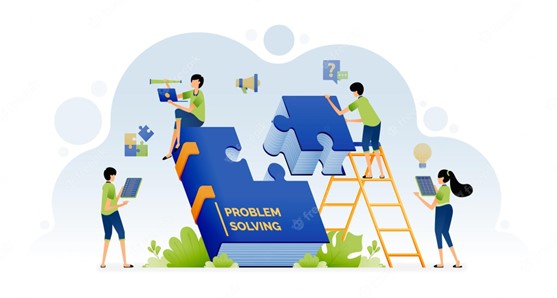Artificial Intelligence (AI) is rapidly changing the world around us, and the field of education is no exception. AI offers opportunities to create a more personalized, effective, and efficient learning experience. However, it also presents challenges and limitations that must be considered. In this article, we will explore the opportunities, challenges, and limitations of AI in education and examine how this transformative technology can be used to create a better learning experience for all.
Benefits of AI in Education
AI has the potential to revolutionize the way students learn and teachers teach. Here are some of the benefits of AI in education:
Personalized Learning
One of the most significant benefits of AI in education is the ability to provide personalized learning experiences. AI can analyze data on a student's learning style, pace, and performance to create a tailor-made learning experience that meets their individual needs. Personalized learning can help students to learn more efficiently, retain information better, and develop a deeper understanding of the subject matter.
Teacher Augmentation
AI can also help teachers to do their jobs more effectively. By analyzing data on student performance, AI can identify areas where students may need extra help or where they are excelling. This can help teachers to create more effective lesson plans and provide targeted feedback to students. AI-powered tools can also help teachers to grade assignments more efficiently, freeing up time to focus on other aspects of their job.
Improved Accessibility
AI can help to make education more accessible to students with disabilities. For example, AI-powered speech recognition software can help students with hearing impairments to participate in class discussions. AI can also help to create more inclusive classrooms by providing real-time translation for students who speak different languages.
Limitations and Challenges of AI in Education
While AI presents many benefits for education, there are also challenges and limitations that must be addressed.
Cost
Implementing AI technology can be expensive, and many schools and universities may not have the resources to invest in this technology. This could lead to a digital divide, where students at well-funded schools have access to AI-powered educational tools, while students at less well-funded schools do not.
Data Privacy
AI relies on large amounts of data to function, and this raises concerns about data privacy. Students' personal information and learning data must be protected, and schools and universities must ensure that they are complying with data protection regulations.
Ethical considerations
AI in education also raises ethical considerations. For example, AI-powered tools may be used to track student behavior and performance, raising concerns about surveillance and privacy. Schools and universities must ensure that they are using AI technology in an ethical and responsible way.
Ethical Considerations in the Use of AI in Education
The use of AI in education raises ethical considerations that must be addressed. Here are some of the key ethical considerations:
Privacy and Data Protection
AI relies on large amounts of data to function, and this raises concerns about privacy and data protection. Schools and universities must ensure that students' personal information and learning data are protected and that they are complying with data protection regulations.
Bias and Discrimination
AI algorithms are only as unbiased as the data they are trained on. If the data used to train an AI algorithm is biased, the algorithm itself will be biased, potentially leading to discrimination against certain groups of students. Schools and universities must ensure that they are using unbiased data to train AI algorithms and that they are monitoring the algorithms for bias.
Transparency
AI algorithms can be difficult to understand, and this raises concerns about transparency. Schools and universities must ensure that they are transparent about how AI-powered tools are being used and how decisions are being made based on the data generated by these tools.
AI-based Educational Tools and Applications
AI has already begun to transform education, and there are many AI-based educational tools and applications available today. Here are some examples:
Adaptive Learning Platforms
Adaptive learning platforms use AI to analyze data on a student's learning style, pace, and performance to create a personalized learning experience. These platforms can help students to learn more efficiently and can provide teachers with valuable insights into student performance.
Grading Software
AI-powered grading software can grade assignments more efficiently than human teachers, freeing up time for teachers to focus on other aspects of their job. However, it is important to ensure that the grading software is unbiased and that it is being used in an ethical way.
Language Translation Tools
AI-powered language translation tools can help to create more inclusive classrooms by providing real-time translation for students who speak different languages. These tools can help to break down language barriers and make education more accessible to all students.
AI and Personalized Learning
One of the most significant benefits of AI in education is the ability to provide personalized learning experiences. AI can analyze data on a student's learning style, pace, and performance to create a tailor-made learning experience that meets their individual needs. Personalized learning can help students to learn more efficiently, retain information better, and develop a deeper understanding of the subject matter. However, there are also challenges that must be addressed.
Over-reliance on Technology
There is a risk that students may become over-reliant on technology, leading to a decrease in critical thinking skills and creativity. Schools and universities must ensure that AI-powered educational tools are being used in a way that enhances, rather than replaces, critical thinking skills and creativity.
Lack of Human Interaction
Personalized learning can also lead to a lack of human interaction, which is an important part of the learning experience. Schools and universities must ensure that personalized learning is being balanced with opportunities for students to interact with teachers and other students.
AI and Teacher Augmentation
AI can also help teachers to do their jobs more effectively. By analyzing data on student performance, AI can identify areas where students may need extra help or where they are excelling. This can help teachers to create more effective lesson plans and provide targeted feedback to students. AI-powered tools can also help teachers to grade assignments more efficiently, freeing up time to focus on other aspects of their job. However, there are also challenges to consider.
Job Displacement
AI-powered tools may lead to job displacement for some teachers, particularly those whose jobs primarily involve grading assignments. Schools and universities must ensure that they are using AI technology in a way that enhances, rather than replaces, the role of teachers.
Lack of Personal Touch
AI-powered tools can also lead to a lack of personal touch in the classroom. Teachers must ensure that they are balancing the use of AI technology with opportunities for personal interaction with students.
AI and Education Policy
AI in education presents new challenges for policymakers. Here are some of the key policy considerations:
Regulation and Oversight
Schools and universities must ensure that they are complying with data protection regulations and that they are using AI technology in an ethical and responsible way. Policymakers must provide clear regulations and oversight to ensure that AI technology is being used in a way that benefits students and teachers.
Addressing the Digital Divide
Policymakers must also work to address the digital divide and ensure that all students have access to AI-powered educational tools, regardless of their socio-economic background.
Evaluating the Effectiveness of AI
Policymakers must also evaluate the effectiveness of AI-powered educational tools and applications to ensure that they are improving student outcomes and enhancing the role of teachers.
Conclusion
AI has the potential to revolutionize the way we learn and teach, but it also presents challenges and limitations that must be addressed. By considering the opportunities and challenges of AI in education and examining the ethical implications of using this technology in the classroom, we can ensure that we are using AI in a way that benefits students and teachers. With careful consideration and planning, AI has the potential to create a more personalized, effective, and efficient learning experience for all.

